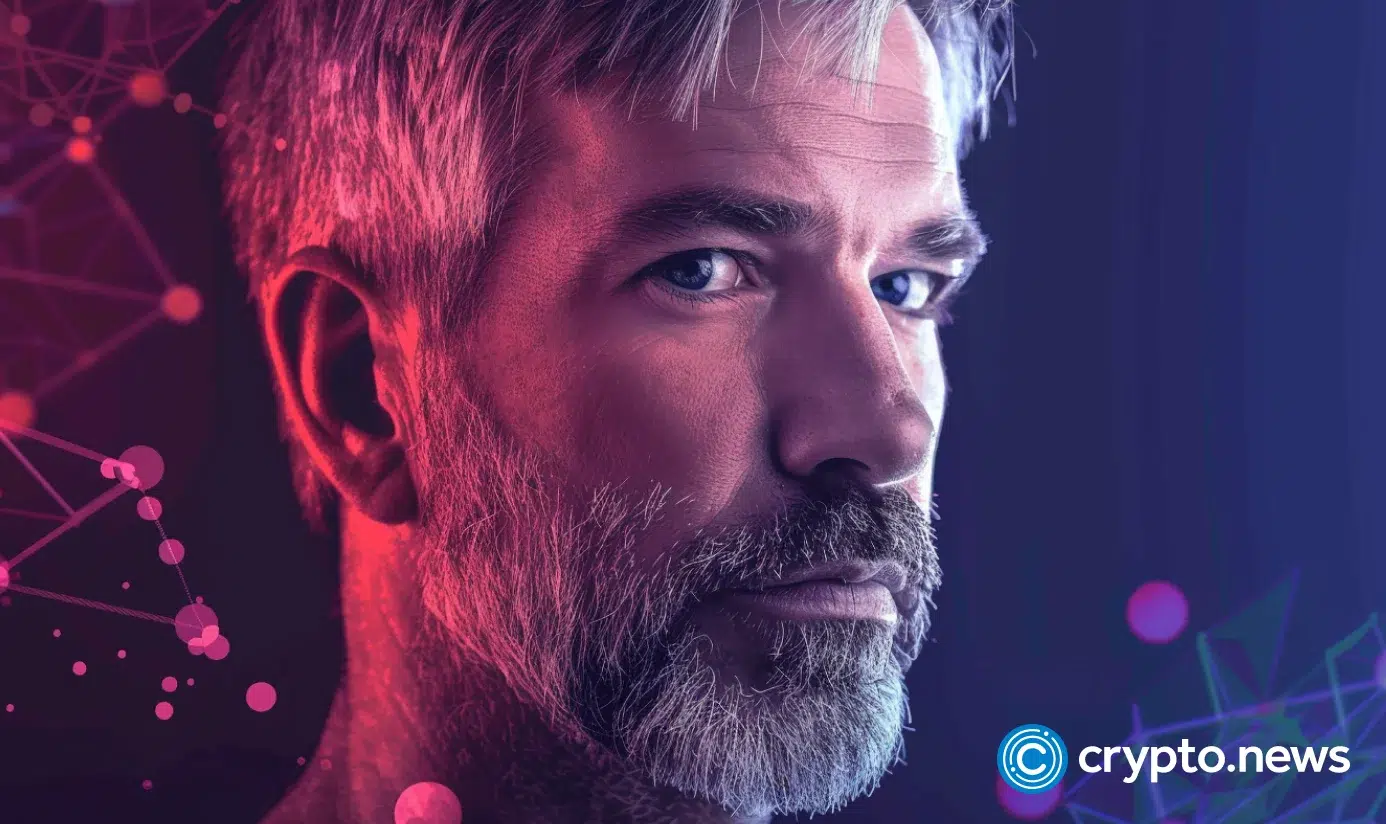Michigan Church Shooting: Everything We Know So Far
Here we go again, folks. Another peaceful Sunday torn apart by senseless violence—this time, in Grand Blanc Township, Michigan. The Michigan church shooting shook not only the local congregation but also the entire country. During what should have been...

Here we go again, folks. Another peaceful Sunday torn apart by senseless violence—this time, in Grand Blanc Township, Michigan. The Michigan church shooting shook not only the local congregation but also the entire country. During what should have been a serene Sunday service, chaos erupted when a man drove his truck through the doors of a Church of Jesus Christ of Latter-day Saints chapel and opened fire. Yes, you read that right. A house of worship turned into a scene straight out of a nightmare.
Before we dive into the horrifying details, let me set the tone: this wasn’t just some random act of chaos. It was deliberate, devastating, and downright evil. The gunman used an assault style rifle, set the place on fire, and caused a full-blown emergency response in a matter of minutes. As news broke, words like multiple victims, grand blanc, and police chief William Renye started trending, and not for good reasons.
This wasn’t a crime that stayed quiet. It caught fire—literally and figuratively—with images and video showing flames engulfing what was once a peaceful gathering place. People ran barefoot across the church parking lot, clutching loved ones and dodging danger. The Grand Blanc Township community has been left shaken to its core, and the ripple effects are spreading across the nation.
We’re breaking this all down—what happened, who the shooter was, how the community is coping, and what’s next. With dozens of updates flying around from several news sites and local authorities, we’re giving you everything you need to know. So grab your coffee and buckle up, because this isn’t your average headline. It's a gut-punch to the soul of every religious institution in America.
The Day That Turned Terrible

Let’s talk about what actually happened that horrific morning. The Michigan church shooting took place at approximately 10:25 a.m. at a Church of Jesus Christ of Latter-day Saints in Grand Blanc Township. A gunman, later identified as Thomas Jacob Sanford, rammed his truck into the building’s entrance during Sunday service, startling everyone inside. This wasn't just a car crash. It was an all-out attack.
As terrified churchgoers scrambled to make sense of the impact, Sanford emerged from the vehicle wielding an assault-style rifle. He immediately opened fire, striking multiple victims, including at least four people who were later shot dead. The trauma didn’t stop there. The shooter then intentionally set the church interior ablaze, causing massive flames and thick smoke to rise, making escape even more chaotic.
In just minutes, the sanctuary turned into a warzone. Emergency calls flooded in, and within 30 seconds, Grand Blanc Township Police arrived on scene. By 10:33 a.m., the fire ended and the shooter had been neutralized. But the damage was already done. According to Police Chief William Renye, there may be additional victims still unaccounted for due to the fire's destruction. And honestly? That thought alone is haunting. What began as a regular morning of worship ended in tragedy, shaking not just the grand blanc community, but the entire country.
To make matters worse, the incident is now being linked to broader concerns about safety in religious institutions. From Baptist churches to other LDS church locations across the country, there’s now a renewed sense of fear. As officials sift through what remains of the scene, questions swirl about why this happened, how it happened so quickly, and whether it could happen again. These aren’t just headlines. This is real life for the people of Grand Blanc.
Victims and Toll: Who’s Hurt, Who’s Gone
Let’s get real: the numbers are horrifying. This wasn’t just a brush with danger; it was a full-blown catastrophe. Authorities have confirmed that at least four people were killed in the Michigan church shooting at church in Grand Blanc, Michigan, and eight others sustained various injuries. Several of them are still in critical condition, battling for their lives at Henry Ford Genesys Hospital. Doctors and nurses are working around the clock. This is the kind of thing you pray never happens in your city.
The wounded were quickly assisted by emergency responders and first responders, who rushed them out of the burning church and into ambulances. Many were suffering from gunshot wounds, while others had injuries related to smoke inhalation and fire. The church parking lot turned into a makeshift triage area, with medical crews trying to do the impossible—save lives in the middle of a battlefield.
Witnesses reported seeing entire family members clutching each other and crying. According to the news authorities, law enforcement and fire officials believe there may be more victims trapped inside, pending structural clearance. The Grand Blanc Church that once echoed with prayers and hymns now stands charred, silent, and full of unanswered questions. This wasn’t just a shooting; it was a soul-crushing attack on a community’s heart.
The Grand Blanc community is struggling to come to terms with what happened. Candlelight vigils have popped up, and online fundraisers are pouring in to help cover medical bills and funeral costs. The victims range from older worshippers to two children who barely escaped with their lives. This isn’t just a story of numbers; it’s a story of shattered lives, broken faith, and a long road to healing.
The Suspect: Thomas Jacob Sanford

Now let’s talk about the man behind this nightmare. The shooter was identified as Thomas Jacob Sanford, a 40-year-old from Burton, Michigan. He was a former Marine who had served in Operation Iraqi Freedom. Sanford served in the Marine Corps from June 2004 to June 2008. A resident of nearby Burton, Sanford reportedly had no prior criminal record, but his recent behavior raised some red flags. Investigators are currently combing through his cell phone records and social media for any signs of motive.
Sanford’s actions were anything but random. Reports say he drove a pickup truck decked with American flags straight into the church. Once inside, he used an assault-style rifle to open fire on innocent worshippers. After the Michigan church shooting, Sanford allegedly set fire to the church building, which has since been contained. The level of planning? Terrifying. Authorities believe this wasn’t spur-of-the-moment rage; it was a calculated, cold-blooded tragic act.
The shooter was fatally wounded during a brief shootout with two officers. According to police chief William Renye, the entire incident from first shot to fire ended lasted under 10 minutes. The police chief confirmed that Sanford was “neutralized” around 10:33 a.m., just minutes after the shooting began. Yet, the aftermath will stretch on for years. Whether he had connections to other religious institutions or acted alone remains under investigation. One thing is clear: Sanford's past and his violent present are being scrutinized under a nationwide spotlight.
What’s really unsettling is that Sanford may have left digital clues behind. Authorities are actively digging into his suspect's residence and combing through his online history for any hints of premeditation. They are not ruling out connections to extremist groups or broader ideologies. For now, the only truth we know? A man with military training turned a sanctuary into a warzone, and no one saw it coming.
How It Happened Inside the Church
It was supposed to be just another quiet Sunday morning. Families dressed in their best, children fidgeting in pews, older folks nodding in prayer. But in seconds, all of that changed. The suspect began shooting right after crashing his truck into the front of the church of Jesus Christ. People inside thought it was an explosion at first. Then came the gunfire.
Witnesses say the shooter didn’t hesitate. He opened fire with what appeared to be an assault-style rifle, targeting whoever was in his path. In total chaos, people screamed, ducked, and tried to find exits. Some couldn’t. To make matters worse, Sanford allegedly intentionally set the church ablaze, creating even more panic as flames spread and smoke rose into the sanctuary.
Several managed to get out through broken windows. Others helped carry out the injured. Two children were seen running out barefoot, their faces covered in soot and fear. It’s a miracle that more weren’t killed on the spot. According to the news, had emergency responders been even a minute late, the body count would have been higher. One churchgoer described it as “hell on Earth” — and honestly, that tracks.
From start to finish, the entire assault lasted less than 10 minutes, but the scars? They'll last forever. The latter day saints in Grand Blanc will have to rebuild not just a structure, but trust, security, and emotional peace. Local pastors from other denominations like the Baptist church have already reached out with support. This wasn’t just a crime; it was a calculated attack on faith, community, and everything that building stood for.
READ ALSO: Charlie Kirk Dead? Here’s What Actually Went Down
Smoke, Flames, and a Chaotic Escape

Eyewitnesses will never forget what they saw. As soon as the Michigan church shooting stopped, a new threat began: fire. Thick smoke rose from the chapel, blackening the skies above grand blanc. People ran for their lives, coughing, screaming, tripping over each other. Several churchgoers were seen fleeing through windows, carrying their kids in their arms. It was pure, unfiltered chaos.
The fire had been intentionally set by Sanford, using some sort of accelerant. Flames spread fast, engulfing pews, walls, and hallways. Within minutes, the building was filled with heat and smoke so thick you couldn’t see two feet ahead. According to reports, the fire department struggled to reach all corners of the chapel due to structural damage and the blaze’s intensity.
And let’s not forget the church parking lot. That’s where survivors gathered, barefoot, bloodied, some missing family members. There were people screaming names, dialing phones with shaky hands, begging for help. The emotional toll was almost worse than the physical one. One woman told local reporters that she watched a friend collapse from smoke inhalation just steps from safety.
This wasn’t just a building on fire. It was a community being ripped apart in real time. And even as emergency responders rushed to help, the damage had already been done. The flames eventually died down, but the trauma? That’s going to linger in Grand Blanc township for a long, long time.
The Fast Action of Grand Blanc Township Police
Say what you want about law enforcement, but in this case, they did not mess around. Within 30 seconds of the first emergency call, Grand Blanc Township Police arrived on scene. Thirty seconds. That’s barely enough time to heat your coffee, and they were already there, running toward the gunfire. When lives are on the line, that kind of speed is everything. It might be the only reason more people didn’t die in the Michigan church shooting.
And their timing wasn’t just fast—it was life-saving. Officers and first responders got into the burning building, helped evacuate multiple victims, and managed to fire end the chaos within 7 minutes. Seven. That’s the entire timeline from crash to neutralizing the gunman and stopping the fire he intentionally set. This wasn’t just a police response; it was a full-force effort of bravery and coordination from local law enforcement.
They weren’t alone. Emergency responders from the fire department and medical teams coordinated with officers to control the scene. The church parking lot became a hub of activity: triage, rescue, and firefighting all at once. One by one, victims were carried out, treated, and rushed to nearby hospitals, including Henry Ford Genesys Hospital. Without that collaboration, we’d be talking about far more than at least four people dead.
This was one of those rare moments where everything moved like a machine. And it needed to. The Grand Blanc township police saved lives that day. Period. From crowd control to carrying wounded worshippers out of a burning church, their actions were nothing short of heroic. Let’s give them their flowers—they earned it.
What Police Chief William Renye Said

After the smoke cleared and the last bullet casing was marked, it was time for answers. Stepping up to the mic at an evening news conference, police chief William Renye addressed the shaken public. Calm, clear, and visibly disturbed by the events, he laid out what was known. According to Chief Renye, at least four people were confirmed dead, and eight others had been hospitalized with gunshot wounds or burns.
But what really stuck was his warning: more victims might still be found from this Michigan church shooting. The fire had damaged large portions of the building, making some areas too dangerous to access. Structural damage and heavy smoke left the back of the church nearly inaccessible. “We won’t know the full toll until we can search the entire building,” Renye admitted. That’s a gut-wrenching thing to hear for any family members waiting on word.
Renye also confirmed that investigators were already digging into cell phone records, online activity, and past military history. Digital forensics teams are currently going through Sanford’s Truth Social account, looking for any signs of premeditation. Renye announced that resources will be available to the wider Grand Blanc community at the police department, including counseling services starting the next day. It wasn’t just a local response anymore. Agencies from state and federal levels were now involved, working together to bring transparency and justice.
One of the biggest questions Renye left open? Motive. “We don’t have a clear answer yet,” he said, adding that they were not ruling anything out. Whether this was tied to extremist ideologies, personal grudges, or something else entirely, remains unknown. But the grand blanc township police chief made one thing clear: this investigation will go as deep as it needs to go. And honestly? Good. It better.
The Scene: Grand Blanc, the Church, and the Chaos
If you don’t know much about Grand Blanc, let me paint the picture. It’s a quiet township just outside Flint, a place where neighbors say hello and religious institutions play a huge role in daily life. The Church of Jesus Christ of Latter-Day Saints chapel there wasn’t just any building; it was a safe space, a spiritual home for many families, including some who had been attending for generations.
That’s why the attack stung so deeply. This wasn’t just violence; it was personal. The people in Grand Blanc aren’t just a congregation—they’re a family. When you attack a church in a town like this, you’re attacking the heart of the community. From Sunday school to potlucks, this chapel was a cornerstone. And now it’s a crime scene. The Michigan church shooting prompted many churches and law enforcement agencies to reassess existing safety plans and explore new measures to protect congregations.
Nearby areas like Burton were also rattled, especially since the shooter, Thomas Jacob Sanford, came from there. It made everything hit closer to home. Following the incident, officials in major cities announced increased patrols at places of worship. Members from other faiths—including the Baptist church down the road—have already stepped in with support. Interfaith vigils are being planned. It’s proof that tragedy doesn’t care what denomination you belong to. When one church bleeds, others feel it.
That day, what should have been another peaceful Sunday morning was instead marked by horror. And let’s not forget, this chapel was tied to a larger network of the Church of Jesus Christ of Latter-Day Saints. Congregations across the country are watching closely. Because if it could happen in Grand Blanc, it could happen anywhere.
READ ALSO: Left Wing Versus Right Wing Politics Explained In Simple Terms
Investigation: What’s Next and What’s Not Being Said Yet

Now comes the aftermath. As the debris cools, investigators are turning up the heat. Sanford’s suspect's residence in nearby Burton has been searched for evidence, including digital devices, journals, and potential explosives. What they’re hoping for is insight. What they’re terrified to find? A pattern.
They’re also diving into his cell phone records, military history, and activity on platforms like truth social. Digital forensics teams are analyzing everything—calls, messages, even deleted content. There are rumors he may have had ties to groups online that spread dangerous ideologies. But so far, officials say the motive remains unclear.
The FBI and ATF are now officially involved. The FBI has deployed 100 agents to assist in the investigation of this incident. This is no longer just a local case; it's national. They’re tracking financials, communication patterns, and possible contacts. Was Sanford acting alone? Was this tied to other religious institutions or just one man’s spiral into violence? These are questions that need solid answers, not speculation.
The only thing that’s certain? Everyone’s watching. From the media to the oldest ever president issuing statements, the world wants closure on this Michigan church shooting. And the people of Grand Blanc township deserve nothing less. Until we know more, we sit in this painful, confusing in-between. But the investigation is far from over. In fact, it's only just begun.
National Reactions and Media Spotlight
The national spotlight hit Grand Blanc Township like a freight train. Within minutes of the news breaking, media outlets began posting updates. Their early reports confirmed multiple victims, detailed the fire, and tracked the timeline as it unfolded. Social media platforms exploded with posts, hashtags, and prayer requests. People from all over the country wanted to know what had happened inside that chapel.
Church engulfed in flames in Grand Blanc, Michigan after mass shooting injures multiple people. pic.twitter.com/G07GvNGfvD
— Pop Crave (@PopCrave) September 28, 2025
Then came the political wave. President Donald Trump released a statement via Truth Social, calling the event a “devastating attack on the faithful” and offering prayers for the victims. Attorney General Pam Bondi also spoke out, demanding swift action and support for local law enforcement. These statements were not just political; they represented the broader national grief and concern for violence in religious institutions.
Mainstream media didn’t hold back either. News anchors, pundits, and commentators quickly framed the incident as part of a disturbing trend. Attacks on places of worship—whether it’s a Baptist church, synagogue, or mosque—have become far too common. The media repeatedly referred to the Michigan church shooting as a tragic act, and rightly so. Their coverage also reignited the conversation about church security and public safety.
We are tracking reports of the horrific shooting and fire at an LDS church in Grand Blanc, Michigan. @FBI agents are on the scene to assist local authorities.
Violence in a place of worship is a cowardly and criminal act. Our prayers are with the victims and their families…
— FBI Director Kash Patel (@FBIDirectorKash) September 28, 2025
Michigan Governor Gretchen Whitmer said her heart is breaking for the Grand Blanc community and called violence anywhere, especially in a place of worship, unacceptable. For a small community like Grand Blanc, this level of media exposure is overwhelming. But it also brings attention to the vulnerability of peaceful spaces. Every camera and every article makes one thing clear: what happened here matters everywhere. And if we’re not careful, it could happen again.
Community Pain and Strength in Grand Blanc
Let’s talk about heartbreak and resilience. The Grand Blanc community is currently walking a tightrope between devastation and unity. Family members of the victims are in mourning, holding onto each other for dear life. Some lost loved ones in a matter of seconds; others are pacing hospital hallways, waiting for any good news. The emotional toll is real, raw, and unimaginable.
But in the face of all this pain, something beautiful is happening. People are stepping up. Fundraisers have been launched for funeral costs, hospital bills, and rebuilding efforts. Local businesses are donating meals to first responders. And online communities have raised thousands within hours. If there’s one thing we know about small towns like Grand Blanc, it’s that they show up when it counts.
Prayer circles have formed around the Grand Blanc church, with neighbors of all faiths coming together. Members of the Baptist church, local mosques, and even non-religious residents have brought candles, flowers, and messages of support. It’s not just a response; it’s a collective act of love. The scene that once held screams and sirens now glows with flickering lights and silent prayers.
And while the pain is deep, the spirit of the community runs deeper. As search efforts continue and the investigation unfolds, everyone knows this isn’t over. More victims may still be discovered. But one thing is clear: Grand Blanc township is wounded, yes—but it is not broken.
What This Means for Churches Across America

Let’s be honest—this isn’t just a Michigan church shooting issue. This is an America issue. The attack on the Church of Jesus Christ of Latter-day Saints in Michigan is sending shockwaves through religious institutions nationwide. Congregations are reviewing safety protocols, locking doors, and wondering, “Are we next?” Churches should be sanctuaries, not potential crime scenes.
The LDS church and its broader community have already begun mobilizing. Security consultants are being hired. Mental health counselors are being brought in. Places of worship are sharing resources on how to handle threats. There’s a real fear that this won’t be the last time a gunman walks into a holy space and opens fire.
Local law enforcement across states are advising churches on updated safety procedures. Some are even offering training for ushers and greeters on what to do during an active shooter situation. It’s a heartbreaking necessity. Whether you're part of a small Mormon church in the Midwest or a mega-church in Texas, the concern is the same: such violence has no place in any community.
So yes, this tragedy changes things. It reminds us that faith doesn’t shield us from bullets. And that’s exactly why every house of worship—Baptist, LDS, or otherwise—must be proactive, not reactive. Because protecting peace should never be optional.
Moving Forward with Pain and Purpose
There’s no sugarcoating it: Grand Blanc township is hurting. Families are grieving. A house of worship is scorched. And a community is trying to figure out how to move on from something they never expected. But if there’s one thing the people of Michigan have always had, it’s grit. They won’t let this tragic act define them.
Already, churches across the region are taking notes. Some have installed cameras. Others are holding safety drills during the week. Faith leaders are talking openly about trauma, grief, and how to support one another. There’s no playbook for recovering from a this Michigan church shooting, but religious institutions are doing their best to write one.
National voices are chiming in too. From the media to concerned senators and civil rights leaders, everyone is calling for something better. Whether it’s better gun laws, improved mental health access, or simply more empathy—people are talking. And that’s a start. Because silence? That only makes room for more violence.
So where do we go from here? Forward. With heavy hearts, yes, but also with resolve. Let this be the moment we stop ignoring the risks and start protecting our sacred spaces. Not out of fear, but out of love—for our faith, our neighbors, and our entire community.

 Fransebas
Fransebas 































